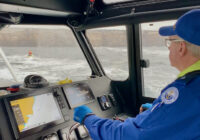From faxed CVs in the 1980s to borderless hybrid teams in 2025, the pace of change in recruitment has been extraordinary. As global talent solutions partner Robert Walters marks its 40th anniversary, new research shows just how dramatically the landscape has shifted and where it’s heading next.
In Australia today, job ads that once attracted just 20 CVs now receive hundreds within 24 hours, yet only one in ten applicants prove a genuine fit. At the same time, more than a third of occupations are in shortage, the highest level on record – leaving businesses struggling to secure the skills they need.
Looking ahead, AI, skills-first hiring, and global talent mobility are set to redefine the decade. Robert Walters experts share how organisations can adapt and what the future of work in Australia will really look like.
Applications: Surge in quantity, drop in quality
Applying for a job has never been easier, or more competitive.
Robert Walters research shows 57% of candidates now apply for 20 or more jobs at once, often using AI- powered tools to assist with the application process.
Some roles receive over 600 applications within 24 hours, yet only 1 in 10 applicants have the relevant skills. The share of “highly suitable” candidates has fallen by almost 30% since the early 2000s.
Over the past 40 years, Robert Walters has seen a dramatic shift in how people apply for jobs and has adapted its recruitment strategies accordingly.
How it’s changed over time:
1980s: Recruitment was a manual process. Job seekers mailed or faxed CVs, and employers relied on paper-based filing systems. Each vacancy typically received 20–30 applications, giving recruiters the time to review each candidate thoroughly.
2000s: The rise of online job boards and email transformed recruitment. Applications increased to 100+ per role, enabling faster candidate reach but also creating early signs of volume-related challenges. Digital databases made storing and searching CVs easier, while ATS (Applicant Tracking Systems) began emerging to help manage growing applicant pools.
2025: AI-driven platforms and mobile applications have revolutionised recruitment. SEEK reports applications per job ad are up 44% year-on-year, with hundreds now common. Candidates can apply with a single click, while recruiters face the challenge of filtering large volumes of automated applications. Robert Walters research also reveals that 60% of Australians are actively considering changing roles to secure higher pay, reflecting the pressures of today’s cost-of-living and economic environment.
“Ease of applying with the help of AI has created unprecedented white noise for employers,” said Shay Peters, CEO of Robert Walters ANZ. “The challenge in recruitment today is filtering through the flood of candidates to find the handful who are truly suitable.”
Skills shortages: Australia’s ongoing battle
While employers are overwhelmed by applications, Australia is facing its most severe skills shortage in decades.
According to Jobs & Skills Australia’s 2024 Skills Priority List, 36% of all occupations are in shortage – the highest proportion on record. Employers consistently rank the shortage of specialist talent as their single biggest barrier to growth.
Robert Walters’ research shows that 31% of Australian employers say lack of technical skills is their top hiring challenge, second only to high salary expectations.
This gap is felt across multiple industries:
Technology: Cyber security roles have grown 60% since 2020, with AI specialists forecast to increase 25% annually to 2030.
Green energy: The Clean Energy Council estimates 30,000 extra renewable energy workers will be needed by 2030.
Construction: Infrastructure Australia projects a shortfall of 93,000 workers by 2026, risking delays to critical housing and infrastructure projects.
Healthcare: Aged care workers, nurses, and GPs are in unprecedented demand. Australia faces a shortfall of 1,490 registered nurses by 2025 and a projected 110,000 aged care workers needed by 2030.
“Skills shortages are now economy-wide, spanning tech, healthcare, and critical infrastructure,” said Peters. “Businesses that fail to act risk falling behind in a highly competitive labour market.”
Global talent: from local placements to borderless teams
Over four decades, Australia’s hiring market has transformed from mostly local to globally connected:
1980s: Overseas hires were rare and mostly executive-level.
2000s: Skilled migration accelerated, with more than one in three engineers sourced from overseas.
COVID-19: Border closures caused a shortfall of around 400,000 migrant workers, leaving hospitals, construction sites, and tech projects understaffed.
2025: The government aims to connect 600,000 skilled migrants with employers to ease shortages in healthcare, construction, and technology.
Today, organisations are building borderless, hybrid teams, enabled by AI and cloud-based collaboration tools. Gartner predicts 65% of companies will employ international remote staff by 2030, and Robert Walters reports a sharp rise in hybrid and fully remote international hires.
“Australia has always attracted global talent,” Peters said. “The future is borderless. Teams will be working seamlessly across time zones, without the need for VISAs or relocation.”
The next decade: what recruitment in Australia will look like
Looking ahead, four forces will define Australia’s recruitment landscape:
AI Everywhere: AI literacy is rapidly becoming a must-have skill.
Skills-First Hiring: Employers will prioritise verified technical skills and essential soft skills over traditional degrees or titles.
Flexible & Borderless Work: With 36% of Australians working from home regularly (ABS 2024), hybrid and global remote teams are here to stay.
Purpose & Inclusion: Gen Z and Gen Alpha are shaping workplace expectations, with wellbeing, sustainability, and diversity front of mind.
“The next decade of hiring in Australia will be defined by AI, skills-first thinking, and workplaces that put people at the centre,” Peters said. “The companies that adapt now will have the competitive edge in attracting the talent of tomorrow.”
For more information visit www.robertwalters.com.au







